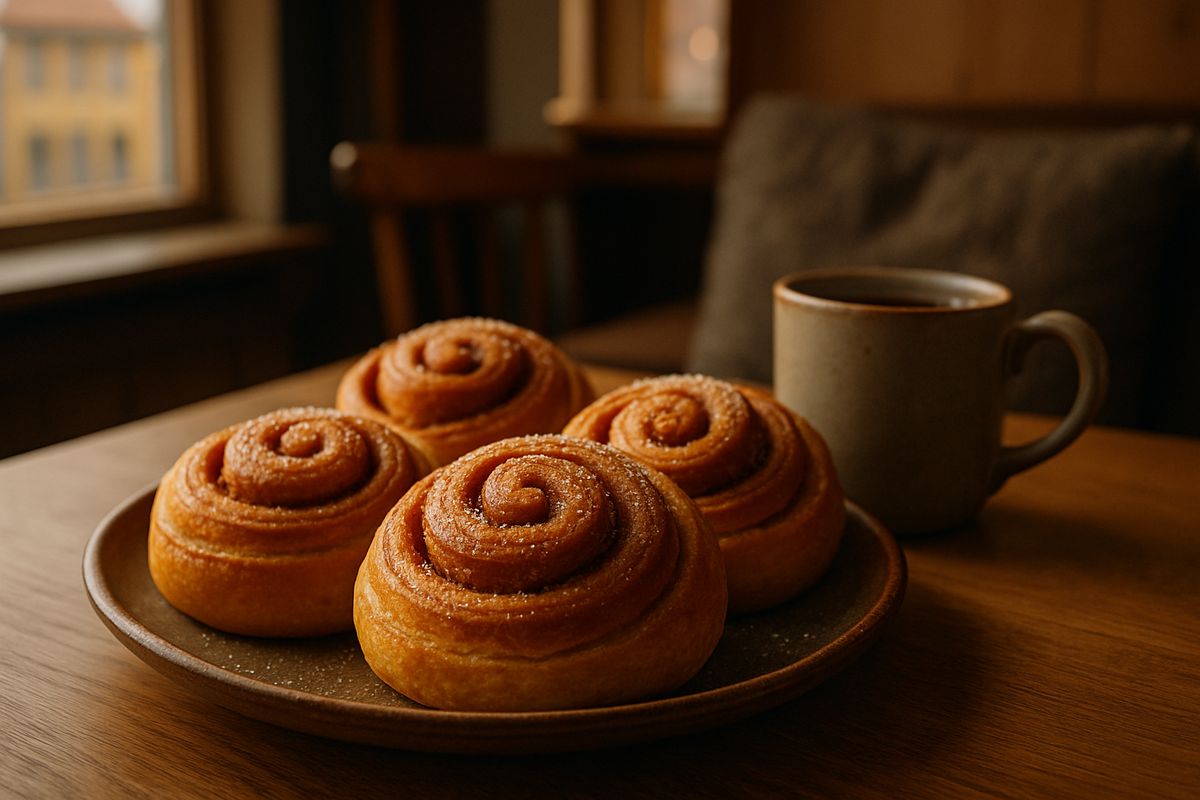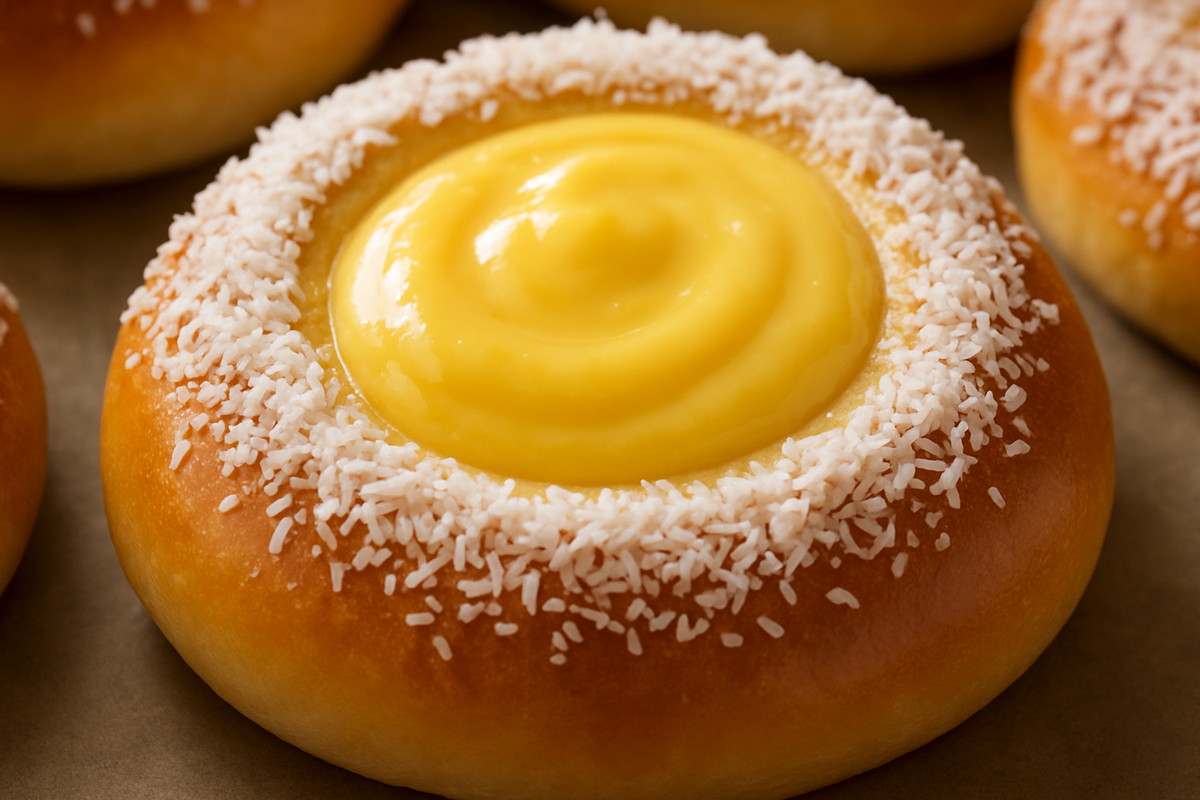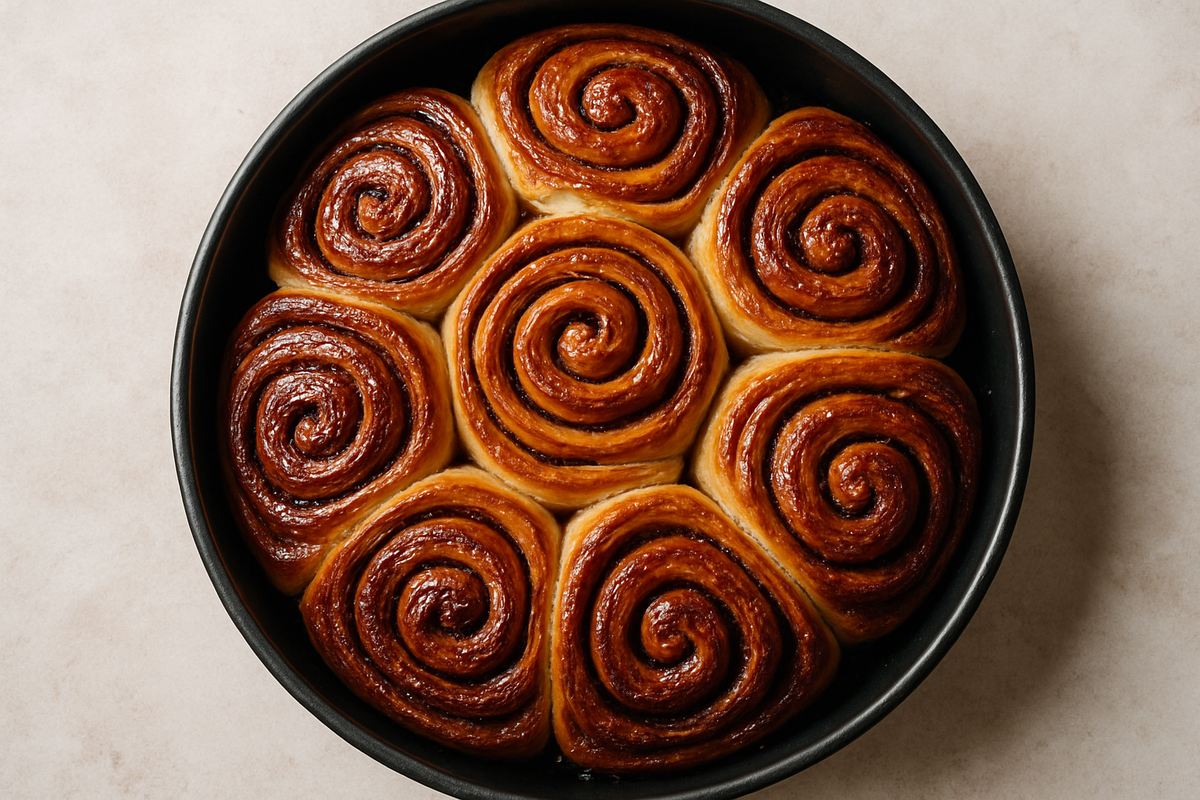Skillingsboller & Skolebrød: fragrant buns that have won the hearts of Norwegians and tourists alike
The smell of warm cinnamon in the narrow streets of Bryggen and shiny icing on children's lunch boxes are two sweet symbols of Norwegian baking. Skillingsboller, Bergen's snail-shaped bun, and Skolebrød, a "school bun" with custard and coconut, have long since crossed the boundaries of fika coffee breaks and become the taste of Norwegian cosiness. Let's take a look at how they came about, where to find the best versions and how to bake them quickly at home.

How did Skillingsbolle come about and why is it associated with the "skilling" coin?
In the 18th century, bakers sold buns costing one copper skilling at the fish market in Bergen. Thus, the name "Skillingsbolle" stuck to this soft yeast roll generously sprinkled with cinnamon and sugar. Today, the bun is eaten for breakfast or kaffepause; the classic diameter is about 12 cm, so that it fits on the lid of a coffee cup.
What is Skolebrød and how is it different from Skillingsbolle?
Skolebrød ("school bread") appeared in the 1950s, when bakers in Østlandet began placing a spoonful of vanilla cream in the centre of yeast dough and baking it until golden brown. After cooling, the bun is covered with sugar icing and coconut flakes. Traditionally, parents put Skolebrød in their children's matpakke on Fridays — a sweet end to the school week.

Classic Skillingsbolle recipe (8 pieces)
Dough:
- 500 g wheat flour
- 75 g sugar
- 10 g dry yeast
- 1 tsp ground cardamom
- 300 ml warm milk
- 75 g soft butter
- 1 egg, 1 teaspoon salt
Filling: 75 g melted butter, 100 g sugar, 2 tbsp cinnamon.
- Knead the dough, knead for 10 minutes, leave to rise for 1 hour.
- Roll out into a 35 × 45 cm rectangle, brush with butter, sprinkle with sugar and cinnamon.
- Roll into a log, cut into 8 snails, place in a 26 cm diameter baking tin (like a pull-apart). Leave to rise for 40 minutes.
- Bake for 18 minutes at 190°C. The finished cake is easy to divide into portions.

Quick Skolebrød recipe (12 pieces)
Dough: same as above, but without cardamom.
Cream: 250 ml milk, 2 egg yolks, 50 g sugar, 1 tbsp cornflour, vanilla. Bring to the boil until thickened, then leave to cool.
- Form balls Ø 8 cm, make a depression with a glass, fill with cream.
- Let rise for 35 minutes, bake for 15 minutes at 200°C.
- Dip the cooled buns in the glaze (powdered sugar + milk) and roll them in coconut on the edges.
Where can you buy the best buns?
| City | Bakery | What to try | Price (2025) |
|---|---|---|---|
| Bergen | Baker Brun (Bryggen) | Skillingsbolle Original | 39 NOK |
| Bergen | Godt Brød (Vetrlidsallmenningen) | "XL-Skillingsbolle" | 45 NOK |
| Oslo | Åpent Bakeri (Inkognitogata) | Skolebrød with cardamom | 42 NOK |
| Trondheim | Hevd (Torvet) | Trønder-Skolebrød with cloudberries | 44 NOK |
What drinks and extras would go well with this?
- Filter coffee — a classic pairing that balances the sweetness of cinnamon.
- Black tea with heather — emphasises the floral notes of vanilla cream.
- Hardanger apple must — refreshing acidity to complement the caramel of Skillingsbolle.
Add a slice of Brunost — sweet cheese that harmonises surprisingly well with cinnamon.
Skillingsboller and Skolebrød are a fragrant postcard from Norway: the stormy coast of Bergen and a child's backpack with a school bun. Take a stroll along the wooden promenade, buy a fresh cinnamon bun, and bake Skolebrød at home to feel the warmth of northern cuisine even on the gloomiest of days. A bun, a mug of coffee, the aroma of cardamom — and Norway is just around the corner.





2 comments
Log in to leave a comment